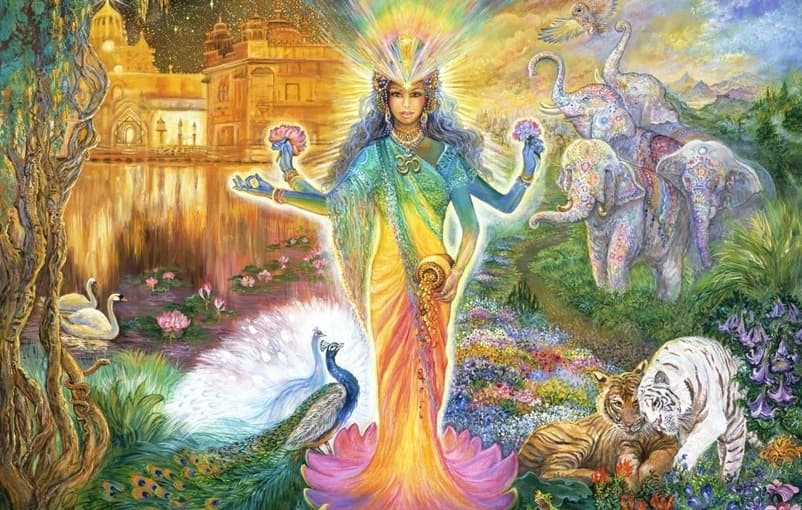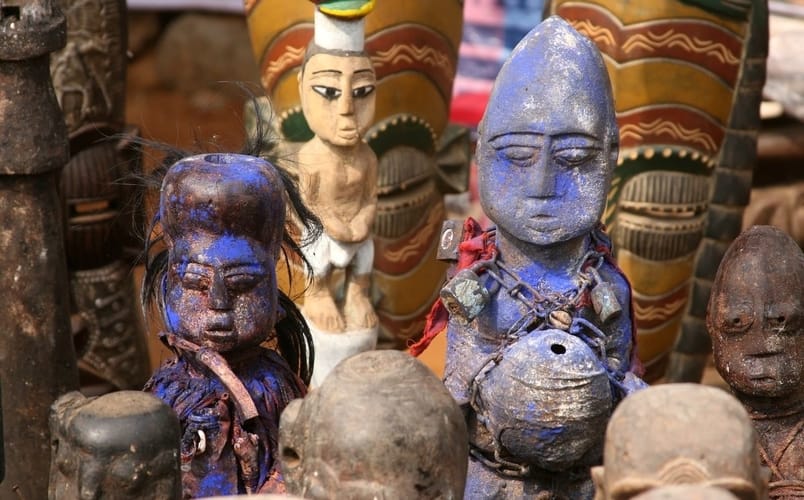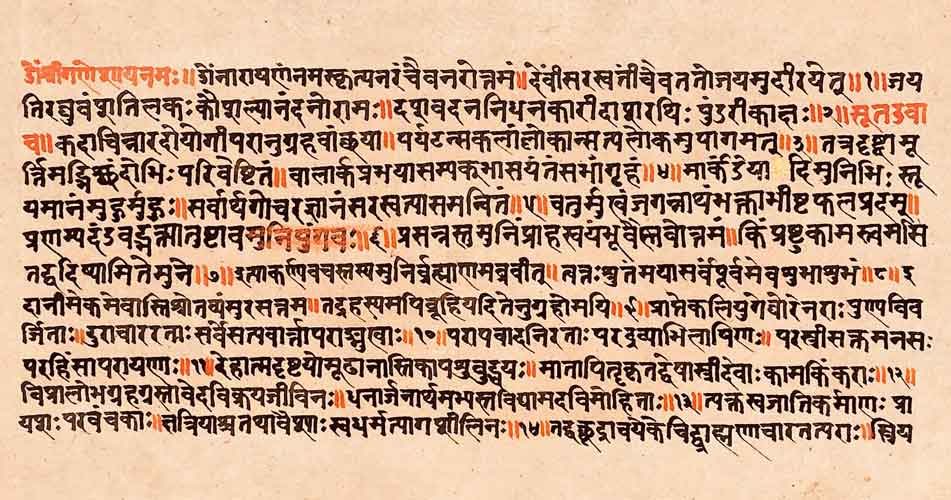Anthropomorphism in religion
Anthropomorphism, the interpretation of nonhuman things or events in terms of human characteristics, as when one senses malice in a computer or hears human voices in the wind. the term was first used to refer to the attribution of human physical or mental features to deities.
By the mid-19th century, however, it had acquired the second, broader meaning of a phenomenon occurring not only in religion but in all areas of human thought and action, including daily life, the arts, and even sciences. Anthropomorphism may occur consciously or unconsciously. Most scholars since the time of the English philosopher Francis Bacon (1561–1626) have agreed that the tendency to anthropomorphize hinders the understanding of the world, but it is deep-seated and persistent.
People in all cultures have attributed human characteristics to deities, often including jealousy, pride, and love. Even deities with an animal form, or with no physical form at all, are thought to understand prayer and other symbolic communication.
The Meaning Of Anthropomorphism:
Anthropomorphism is the attribution of human characteristics and qualities to non-human beings, objects, natural, or supernatural phenomena. God, animals, the forces of nature, and unseen or unknown authors of chance are frequent subjects of anthropomorphosis. The term comes from two Greek words, άνθρωπος (anthrōpos), meaning “human,” and μορφή (morphē), meaning “shape” or “form.” The suffix “-ism” originates from the morpheme “-isma” in the Greek language.
Anthropomorphism has significantly shaped religious thought. Polytheistic and monotheistic faiths have apprehended the nature of divine being(s) in terms of humans characteristics. In early polytheistic religions, human qualities and emotions—including passions, lusts, and petty willfulness were readily identified with the divinities. Early Hebrew monotheism scriptural representations of God are replete with human attributes, however, they lack comparable attributions of human vices.
Anthropomorphism is frequently used as a device in art, literature, and film to convey the author’s message through a symbolic animal or object with human qualities. In technology and science, the behavior of machines and computers is sometimes described in terms of human behavior. The modern science of robotics, which develops machines to carry out automated tasks or enhance human performance, employs anthropomorphism to engage human beings intellectually and emotionally with machines or computers. Computer science studies and attempts to emulate the processes of the human brain in technology.

Anthropomorphism in religion
Since most religious beliefs are homocentric, concerned with questions such as the purpose of humanity’s existence, the origin of human beings, and humanity’s place in the universe, many belief systems assign human attributes to the divine. From the perspective of believers of a religion where the deity or deities have human characteristics, it may be more accurate to describe the phenomenon as “theomorphism,” or the giving of divine qualities to humans, instead of anthropomorphism, the giving of human qualities to the divine. In most belief systems, the deity or deities existed before humans, and therefore humans were created in the form of the divine. This resemblance implies some kind of kinship between human beings and God, especially between humanity’s moral being and God.
For philosophically-minded theists and adherents to theological systems such as Vedanta, the essence of God is impersonal Being, the “ground of being.” Omnipotent, omnipresent, and uncaused, God is totally incommensurate with creation. From that perspective, anthropomorphic conceptions of deity are indeed projections of human qualities on the ineffable.
Mythologies:
Ancient mythologies frequently represented the divine as a god or gods with human forms and qualities. These gods resemble human beings not only in appearance and personality; they exhibited many human behaviors which were used to explain natural phenomena, creation, and historical events. The gods fell in love, married, had children, fought battles, wielded weapons, and rode horses and chariots. They feasted on special foods and sometimes required sacrifices of food, beverage, and sacred objects to be made by human beings. Some anthropomorphic gods represented specific human concepts, such as love, war, fertility, beauty, or the seasons. Anthropomorphic gods exhibited human qualities such as beauty, wisdom, and power, and sometimes human weaknesses such as greed, hatred, jealousy, and uncontrollable anger. Greek gods such as Zeus and Apollo were often depicted in human form exhibiting both commendable and despicable human traits. The avatars of the Hindu god Vishnu possessed human forms and qualities. Norse myths spoke of twelve great gods and twenty-four goddesses who lived in a region above the earth called Avgard. The Shinto faith in Japan taught that all Japanese people were descended from a female ancestor called Amaterasu, Ethiopians say that their gods are snub-nosed [σιμούς] and black
Thracians that they are pale and red-haired.
Anthropomorphism has cropped up as a Christian heresy, particularly prominently with the Audians in third-century Syria, but also in fourth-century Egypt and tenth-century Italy. This often was based on a literal interpretation of Genesis 1:27: “So God created humankind in his image, in the image of God he created them; male and female he created them”.
Anthropomorphic gods are depicted in ancient art found at archaeological sites all over the world. Greek and Roman statuary, Mayan and Aztec friezes, pre-Colombian and Inca pottery and jewelry, Hindu temples and carvings, Egyptian frescoes and monuments, and African masks and fertility statues continue to inspire and awe contemporary observers with their beauty and spirituality.
Anthropomorphism in the Bible:
The first book of the Hebrew Bible depicts God with qualities and attributes similar to those of human beings. The key text is Genesis 1:27, listed below in the original Hebrew, and in English translation:
וַיִּבְרָא אֱלֹהִים אֶת-הָאָדָם בְּצַלְמוֹ, בְּצֶלֶם אֱלֹהִים בָּרָא אֹתוֹ: זָכָר וּנְקֵבָה, בָּרָא אֹתָם.
God created man around His own image, in the image of God He created him; male or female He created them (Genesis 1:27).
The Hebrew Bible frequently portrays God as a master, lord, or father, at times jealous and angry, at other times responding to the supplications of his people with mercy and compassion. In the New Testament, Jesus emphasizes God’s fatherly love and uses parables such as the Prodigal Son (Luke 15:11-32) and The Lost Sheep (Matthew 18:12) to demonstrate the way in which God loves all of humanity. Jesus never taught that God had a physical body resembling a human being, but that God resembled humanity in heart and love.
Hinduism:
The ten avatars of the Hindu supreme God Vishnu possess both human and divine forms and qualities, although their divinity varies in degree. In Vaishnavism, a monotheistic faith, Vishnu is omniscient and benevolent, unlike gods of the Greek and Roman religions.
Condemnation of anthropomorphism:
Numerous religions and philosophies have condemned anthropomorphism for various reasons. Some Ancient Greek philosophers did not condone and were explicitly hostile to, their people’s mythology. Many of these philosophers developed monotheistic views. Plato’s (427–347 B.C.E.) Demiurge (craftsman) in the Timaeus and Aristotle’s (384 – 322 B.C.E.) prime mover in his Physics are examples. The earliest known commentator on anthropomorphism, the Greek poet and religious thinker Xenophanes (c. 560–c. 478 BCE), criticized the tendency to conceive of the gods in human terms,
The philosopher Xenophanes said that “the greatest God” resembles man “neither in form nor in mind.” (Clement of Alexandria, Miscellanies V xiv 109.1-3). The similarity of these philosophers’ monotheistic concepts of God to that of the Bible’s concept was acknowledged by early Christian fathers, especially Origen, and facilitated the incorporation of much pre-Christian Greek philosophy into the Medieval Christian worldview by the Scholastics, notably Thomas Aquinas.
Philo Judaeus (20 B.C.E.–50 C.E.) also followed the early Greek philosophers and taught that God could not be named. Arabian philosophers denied that the essence of God had any attributes, and attempted to define God by “what He was not.” Jewish thinkers such as Maimonides (1135-1204) adopted this concept from Islamic Aristotelianism. Spinoza (1632-1677) denied any commonality between God and humans; he was followed later by J.G. Fichte and Matthew Arnold.
Throughout the history of Christianity, sects called anthropomorphites, including a sect in Egypt in the fourth century, and a group in the Roman Catholic Church in the tenth century were considered heretical for taking everything written and spoken of God in the Bible in a literal sense. This included attributing to God a human form, human parts, and human passions.
And later theologians have sought to reduce anthropomorphism in religion. Most contemporary theologians, however, concede that anthropomorphism cannot be eliminated without eliminating religion itself, because objects of religious devotion must have features to which humans can relate. For example, language, widely considered a human characteristic, must also be present in deities if humans are to pray to them.
Anthropomorphism Examples
Any non-human characters that walk, talk, sing, or dance are examples of anthropomorphism. Disney animal characters like Mickey Mouse, Minnie Mouse, Donald Duck, Goofy, and many others represent anthropomorphic animals.
and more Anthropomorphism Examples:
– In A Dog’s Tale by Mark Twain, the protagonist canine expresses shame, happiness, and fear.
– In American Gods, Neil Gaiman anthropomorphizes technology and media to comment on modern lifestyles and values.
– In Alice’s Adventures in Wonderland by Lewis Carroll, the Caterpillar smokes, folds his arms, and speaks condescendingly.
World Religions
Read also:
Kemetism religion | basics, beliefs, History and More..
Gnosticism beliefs | What are the Gnosticism beliefs summary?
Scientology Religion | What is the Full Story of Scientology?
Tomorrow’s Gods | What is the future of religion in the world?
Shinto Religion | Founder, Beliefs, Gods, & More..
Scriptures On Faith And Encouraging Scriptures for Difficult Times



